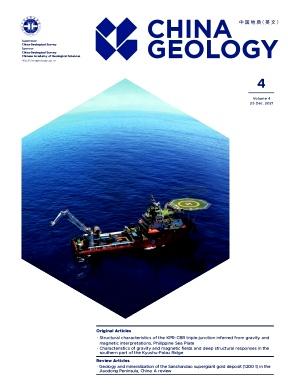Metallogenic characteristics of Shitoukengde intrusion and its implications for Ni-Co-(Cu) sulfide mineralization in East Kunlun
IF 4.7
3区 地球科学
Q1 GEOSCIENCES, MULTIDISCIPLINARY
引用次数: 0
Abstract
Xiarihamu deposit is the only super-large Ni-Co deposit found in East Kunlun orogenic belt (EKOB) until present. Shitoukengde (STKD) intrusion is considered to have the potential to become a large Ni-Co deposit in East Kunlun. In order to discuss the metallogenic potential, this study present petrographical, geochemical data, and zircon U-Pb dating for the STKD intrusion. The STKD intrusion is hosted within mafic-ultramafic rocks which contain peridotite, pyroxenite and gabbro, and mainly intruded into the marble of the Paleoproterozoic Jinshuikou Group. Harzburgite and orthopyroxenite are the main country rocks for the Cu-Ni sulfide mineralization. Combine with the positive εHf(t) values (+1.1 to +8.6) of zircons, the enrichment of LILEs, depletion of HFSEs, and lower Ce/Pb ratios of whole rocks indicate that the parental magma was originated from the depleted asthenospheric mantle and experienced 5%–15% crustal contamination. Troctolite formed during the Early Devonian and it has weighted mean 206Pb/238U age of 412 Ma. Regional background information has indicated that the post-collisional extension setting has already existed during the Early Devonian, leading to the formation of STKD intrusion and Cu-Ni sulfide mineralization. STKD intrusion may have the potential to be one economic Cu-Ni sulfide deposit but seems unlikely to be a super-large one.
狮头坑德侵入体的成矿特征及其对东昆仑镍-铜硫化物成矿的影响
霞里哈木矿床是迄今为止在东昆仑造山带(EKOB)发现的唯一超大型镍钴矿床。石头坑德(STKD)侵入体被认为具有成为东昆仑大型镍钴矿床的潜力。为了讨论其成矿潜力,本研究介绍了石头坑德侵入体的岩石学、地球化学数据和锆石U-Pb定年。STKD侵入体赋存于含橄榄岩、辉绿岩和辉长岩的黑云母-超黑云母岩中,主要侵入古近系金水口组的大理岩中。哈兹堡岩和正长辉长岩是铜镍硫化物矿化的主要母岩。结合锆石的正εHf(t)值(+1.1至+8.6)、LILEs的富集、HFSEs的贫化以及全岩较低的Ce/Pb比值,表明母岩源于贫化的星体层地幔,并经历了5%-15%的地壳污染。曲沸岩形成于早泥盆世,其加权平均 206Pb/238U 年龄为 412 Ma。区域背景资料表明,早泥盆世时期已经存在碰撞后延伸环境,从而形成了 STKD 侵入体和铜镍硫化物矿化。STKD 侵入体有可能成为一个经济的硫化铜镍矿床,但似乎不太可能是一个超大型矿床。
本文章由计算机程序翻译,如有差异,请以英文原文为准。
求助全文
约1分钟内获得全文
求助全文

 求助内容:
求助内容: 应助结果提醒方式:
应助结果提醒方式:


